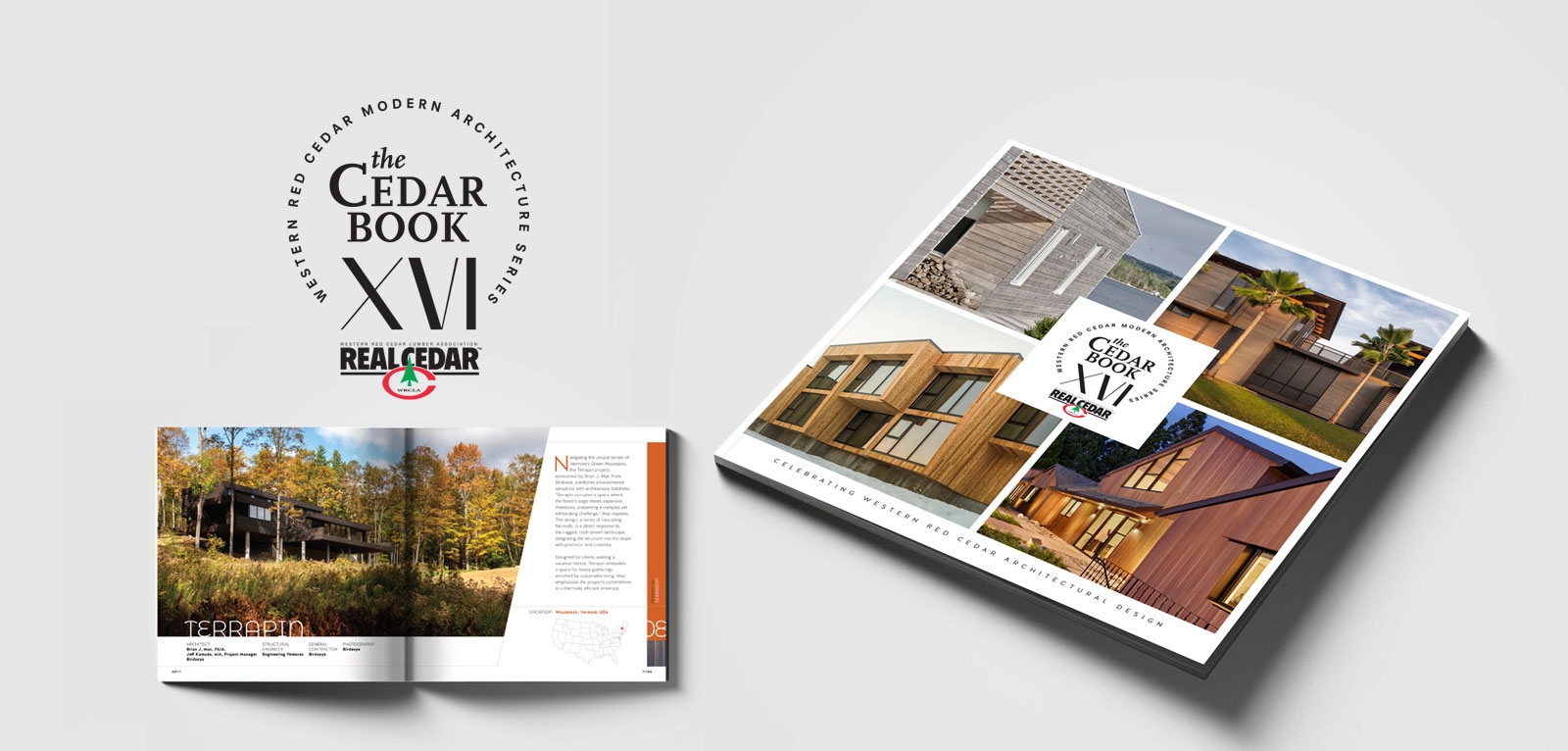Back
Back
Back
Back
Back
Back
Back
Back
Back
Back
USA & Canada
All Good in the Wood

Sign up now for our Architect/Builder Newsletter
Cedar Book XVI Celebrates Nature’s Most Versatile Building Material with a Showcase of the Best in Sustainable Architecture
Craving a material that embodies the future of green building? Feast your eyes on Cedar Book XVI. This latest edition unfolds a vibrant array of wood design projects, each a source of inspiration for those dedicated to sustainable building practices.
This year is particularly special, thanks to Timothy Schouten of GSW Architects, who penned the foreword. Celebrated for his contributions to sustainable design, Schouten expertly sets the stage for our latest journey through the multifaceted world of Western Red Cedar siding and interior panelling. His foreword doesn’t just welcome readers; it immerses them in the profound impact and versatility of this material within the realm of contemporary architecture, illuminating its significance in various landscapes and design philosophies.
Reflecting on the material’s legacy, Schouten notes, “Cedar, our first choice in designing wood exteriors and interiors,” underscoring its pivotal role in the architectural fabric of the Pacific Northwest and beyond. This edition of the Cedar Book showcases a curated collection of projects that demonstrate Western Red Cedar’s adaptability, sustainability, and timeless beauty.
Promoting Well-Being and Standing Up to the Elements
From educational spaces to rugged retreats and tropical homes, Cedar Book XVI delves into how Real Cedar shapes environments that are not only sustainable but also deeply welcoming. Hacker’s French American International School in Portland, Oregon, for example, exemplifies how cedar can achieve a harmonious balance with its environment while pushing sustainable design forward. David Keltner, AIA, praises the material for its “beauty, durability, and versatility,” echoing Schouten’s sentiments and highlighting the project’s integration into the natural landscape and commitment to environmental responsibility.
Amid the vast and icy terrain of Alaska, there’s Aurora Villa. Crafted by Sparano + Mooney Architecture, this boutique hotel uses cedar cladding to complement the “mountain and alpine landscape.” This project stands as a testament to cedar’s role in creating structures that respect their natural settings while providing a sustainable, warm aesthetic.
In Hawaii, Olson Kundig’s design for Hale Napo’o showcases cedar’s ability to blend with tropical environments. “We selected Western Red Cedar for the warm look and feel and its natural weather resistance,” explains Tom Kundig, FAIA, RIBA, highlighting the material’s suitability for coastal conditions and its contribution to the home’s welcoming design.
Celebrating Cedar’s Timeless Appeal
Through diverse architectural expressions, Cedar Book XVI celebrates Real Cedar’s enduring legacy and evolving relationship with architects. From tranquil shores to serene forests, cedar products remain a go-to material for those who prioritize aesthetic elegance alongside environmental and functional considerations.
Schouten’s reflection on his journey with cedar siding—from the rustic allure of a 70s lakefront cabin to the refined exteriors of modern designs—underscores the material’s lasting relevance. “It’s easily available, timeless while at the same time extremely modern, simply beautiful, and above all else, naturally grown and re-usable in so many ways,” he asserts.
Cedar Book XVI transcends a mere collection of projects; it’s a an architect resource that narrates the story of how sustainability, biophilic design and beauty converge around Western Red Cedar. This material, with its storied past and promising future, continues to inspire the architecture of tomorrow.
To download a free copy of Cedar Book XV, click here.
© 2025 All rights reserved
Gatsby Website Development by Jambaree